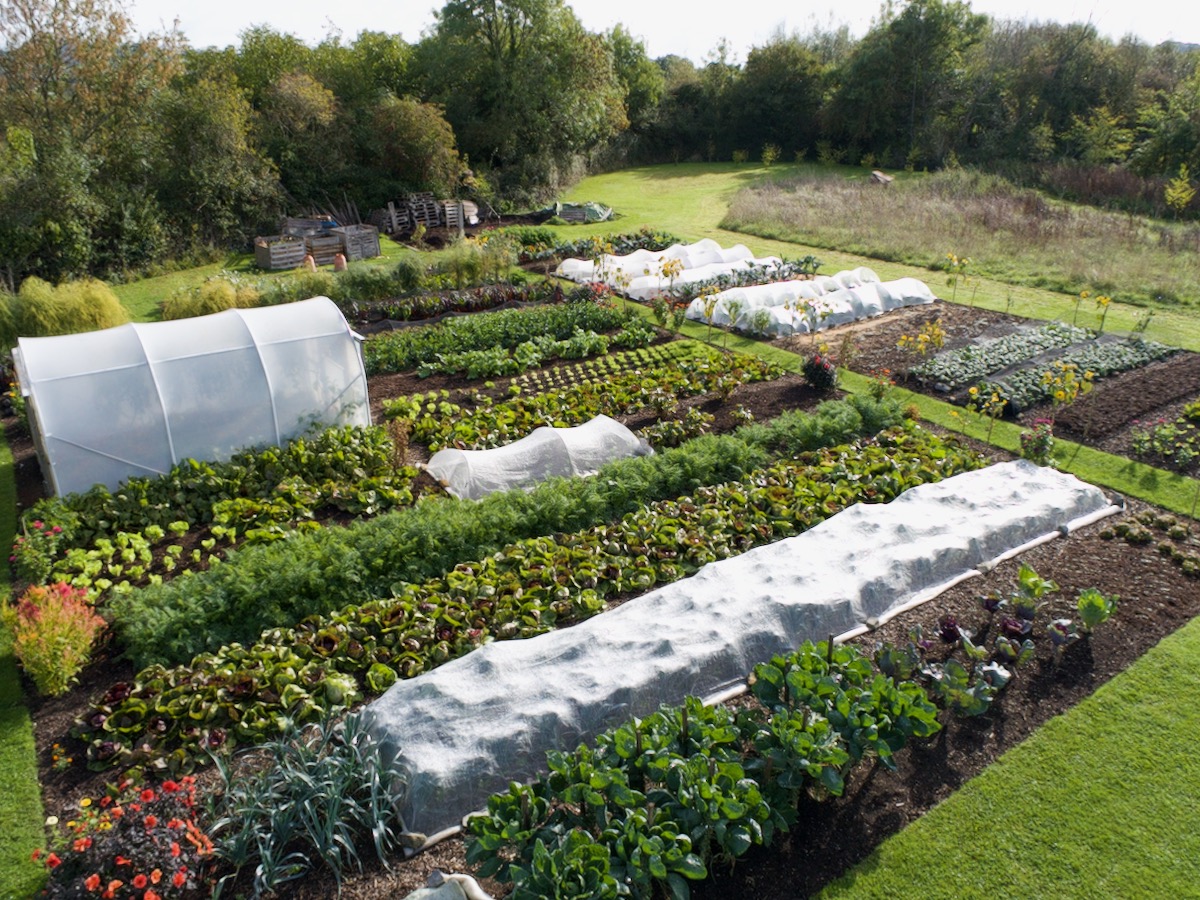
Day length is reducing fast, but there is still a good level of warmth. A good ambition that this time of year is to keep all beds full of plants, for food harvests through winter and into spring.
Then as we go through September and up to the middle of October, you can also sow green manures, sometimes called cover crops. They convert sunlight into carbon, and that is food for soil life. See the photos below, and also my first photo which shows how Homeacres garden is fully planted on 2nd September 2023.
No dig helps with the succession plantings and sowings, because there is little bed preparation. Less time is needed.

More sowing
Even this late in the year, you can make a few more sowings.
1 Salad plants to winter outside. Lambs lettuce / corn salad tops the list for me because it's so tasty and hardy. Either sow direct or in modules to transplant. Other possibles are land cress and claytonia, also called winter purslane.
2 Sow without delay, spring onions and spring cabbage to overwinter as small seedlings outside. Last date for them in temperate climates is around 7th September.
3 Around the middle of September, sow salad plants for overwintering under cover. Make sure you have seeds of the ones you like to eat, such as salad rocket, scarole endive, chervil, coriander, lettuce and spinach. Under cover means polytunnel or greenhouse.
Outside under fleece is possible, but plants then survive more than thrive. Harvests through winter will be smaller.
Do continue to transplant whatever you have ready. I still have some spinach and salad rocket to transplant outside, as in the photo below of late August. If you do not have space, pop in the transplants between any vegetables which might finish by the end of September, such as leaf lettuce.

Cover Crops
For no dig in autumn, I recommend white mustard Synapis alba. It's fast-growing and even if you sow it by early October, there can be a thick sward of green by early December. Then in any winter frost of -4°C/25°F or lower, this mustard is killed. That leaves a thin cover of pale stems on top of the soil which is extra protection and food for soil organisms through winter. I like to scatter the seed and then spread a little compost on top. Sometimes we plant garlic at the same time, see photos below.
No dig is beautiful again for maintaining soil in such a healthy state. This means you do not need to worry about rotation of different plant families. Mustard is a rassica and some diggers worry about growing it after or before other brassicas. I never take this into consideration and just look at what each bed or space needs, at that moment.


Tomatoes
If you lost outdoor tomato plants to late blight, I hope that they are still healthy under cover.
You can encourage ripening by reducing watering.
After mid September, I give no more water to tomatoes growing in soil. In containers, water less. And keep removing sideshoots.

Get Charles's advice in his free newsletter
& 10% off your first order in our shop




